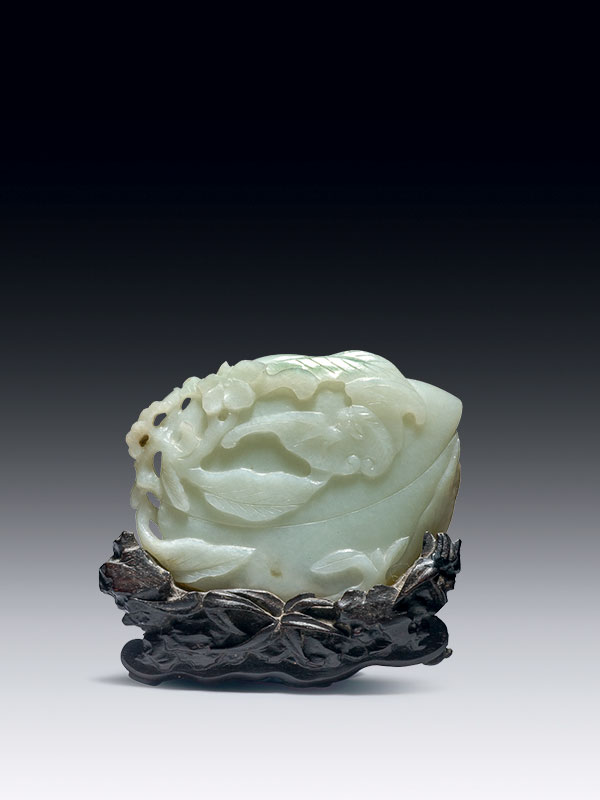Jade plaque of peaches
China, 18th century
A jade plaque of double-peach form, carved in low relief with minutely detailed peach blossoms and flying bats.The peaches are connected with stalks carved in openwork, with open leaves around the peaches carved in relief. The back of the plaque is flat and polished. The stone has a high degree of translucency and is of pale celadon tone, flecked with small areas of russet marking. The peach plaque is supported on a hardwood stand.
SOLD
The decorative scheme of bats and peaches holds ample symbolic meaning in Chinese culture; the bat (fu) and peaches (shoutao) together is a pun for ‘May you posses both blessing and longevity’ (fushou shuangquan).[1] This finely carved peach plaque probably originally was made to form part of the elaborately mounted decorative panels that furnished the palaces of the Imperial City in Beijing. Two similar jade objects, comparable in their low relief carving of double-peach form and bats, were in the Qing Court collection and are now in the collection of the National Palace Museum, Taipei. The slightly larger one is similar in its greenish-white jade colour while the other smaller one has a yellowish tone and is stored in a lacquer box.[2]
- Tse Bartholomew, T., Hidden Meanings in Chinese Art, Asian Art Museum, San Francisco, 1.1.14, p. 26 2 The Digital Archives Sub-Project of Antiquities in the National Palace Museum, nos 故玉2442, 故玉1450

